Machu Picchu, a mystery Inca town in Peru, has graced the front of many a postcard advertising the country as a must-see tourist destination. Even though Peru is known for the Inca Trail and other historical sites, it has a lot more to offer than just crumbling ruins.
The contemporary and traditional towns of the Southern Peru Tourist Corridor sit side by side with ancient pre-Columbian ruins, so take your time exploring them all. Go museum hopping in Lima, relax in Cusco’s high-altitude hot springs, and soar above the mysterious Nazca lines. What follows is a rundown of the top tourist destinations in Peru:
17. Chachapoyas
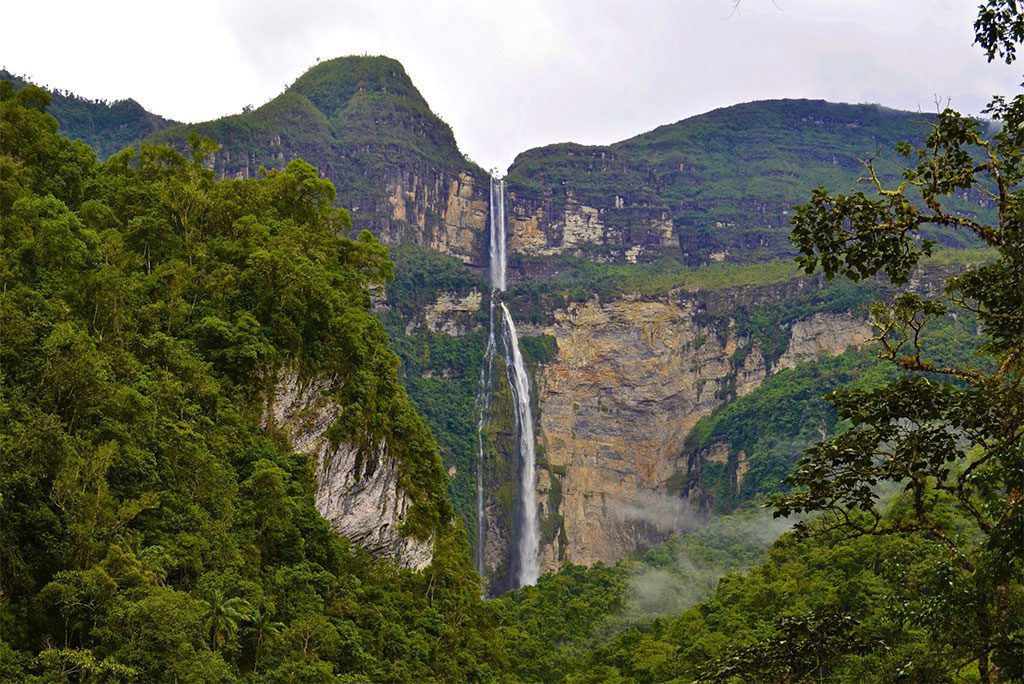 The capital of Amazonas, located in a picturesque but remote area high in the mountains, far from the Peruvian shore, is Chachapoyas. The city itself doesn’t have much going for it, but it serves as a starting point for exploring the spectacular natural surroundings and ancient ruins in the region.
The capital of Amazonas, located in a picturesque but remote area high in the mountains, far from the Peruvian shore, is Chachapoyas. The city itself doesn’t have much going for it, but it serves as a starting point for exploring the spectacular natural surroundings and ancient ruins in the region.
The little city was founded by the Spanish in 1538, and it is home to a few notable monuments and colonial structures, as well as several eateries, hotels, and travel agencies clustered around its central square. From here, it is easy to get to amazing places like the unique sarcophagi of Karajia and the largest pre-Inca ruins in South America, the ancient stone city of Kuelap.
Mountains, valleys, and woods abound in the area, providing a picturesque backdrop for the many varieties of flora and wildlife found there. There are also several beautiful waterfalls here, with the tallest being the 700-meter Gocta Cataracts. The Chachapoyas are a great base from which to go off on a hiking or trekking adventure, since the area is home to a wide variety of stunning scenery.
16. Paracas National Reserve
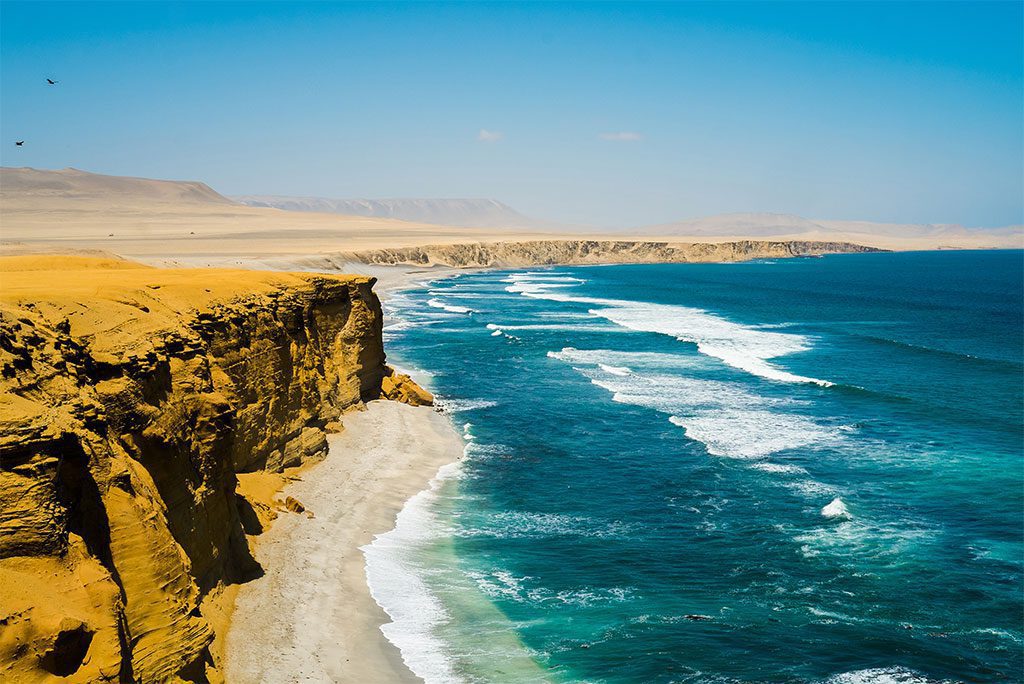
The Paracas National Reserve is a protected area of coastline in southern Peru, about 250 kilometres south of Lima, that is known for its spectacular landscapes, abundance of ancient monuments, and lovely beaches and fauna. Two dry, rocky islands and a marine desert habitat are included inside its borders.
Small coves and bays have shallow, warm waters that are excellent for swimming, despite the fact that the ocean waves pound the craggy, crumbling cliffs and uninhabited isles. In addition to being a great place to go sailing or windsurfing, the protected beaches here are perfect for unwinding. Because there are so many seabirds, seals, and sea lions on the Ballestas Islands, they are also a popular place for boat tours.
Most tourists staying in the area of the Paracas National Reserve do so in the town of Paracas, which shares its name with the reserve. There are hotels, taverns, and restaurants where you can stay, as well as tour guides who can take you to the many archaeological sites all over the reserve.
15. Chan Chan
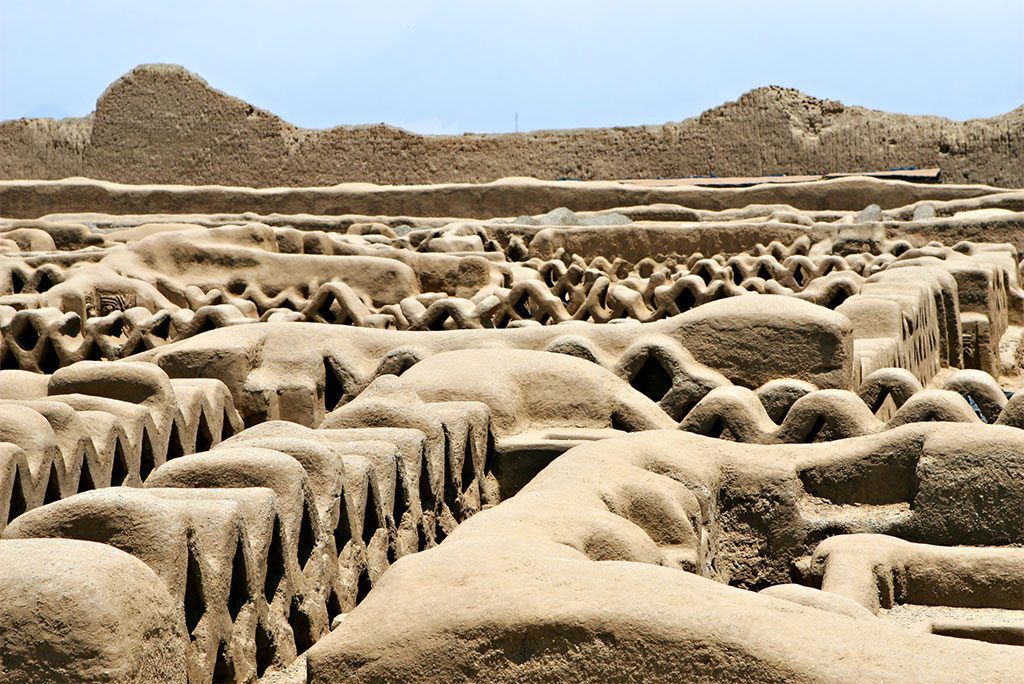
One of Peru’s most remarkable and large archaeological sites, Chan Chan, is located just outside the city of Trujillo in the country’s northwest. The biggest pre-Columbian city found to date, it is located in a bleak and dry area near the entrance of the Moche Valley, not far from the Pacific Ocean.
Chan Chan, the former capital of the Chimu Empire, grew to prominence in the eighth century AD as palaces, plazas, and temples were constructed there. Several of the city’s beautiful sculptures, friezes, and features have been badly damaged over the years, yet many still stand.
In the midst of all this sprawl are eleven royal complexes that include palaces, tombs, and other royal buildings. The Monarchs of Chimu lived here, and when they passed away, they were buried there as well. The only one that has been partly repaired and is available to the public is the Palacio Nik An, which is filled with beautiful geometric patterns, aquatic themes, and impressive building construction.
14. Huascaran National Park
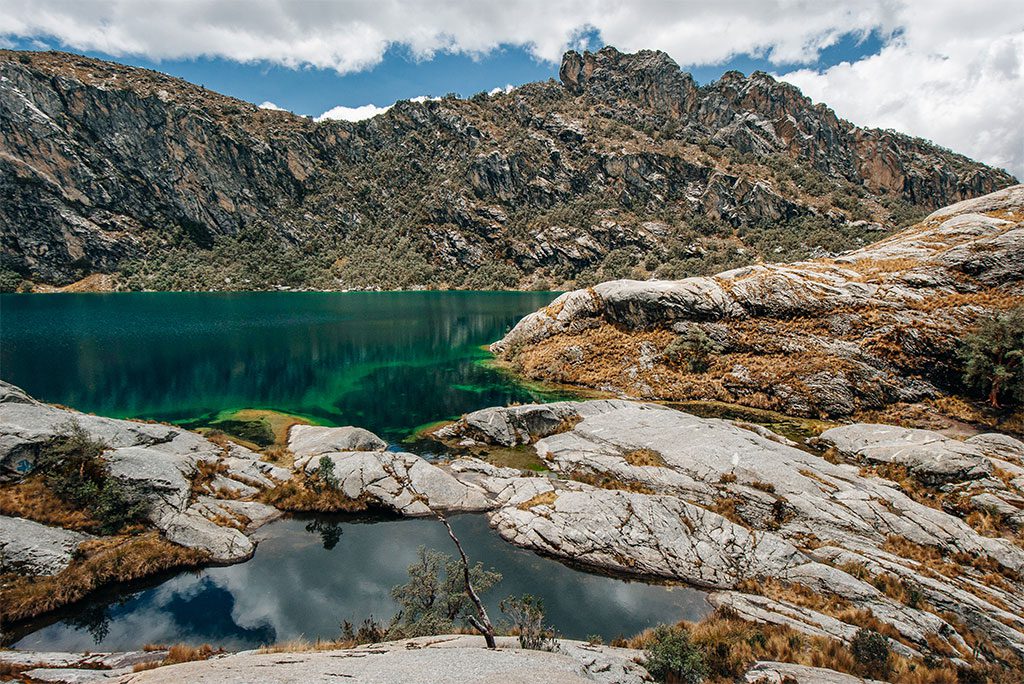
Huascaran National Park, located in the Peruvian Central Sierra, is a massive preserve that protects a large portion of the Cordillera Blanca in the Andes. This tropical mountain range has innumerable varieties of flora and fauna, including the tallest peaks and most breathtaking vistas in the world.
The park, which was established in 1975, covers a large geographical region and is home to many towering mountains. The peak of Huascaran, after which the park is named, is the highest point in Peru, standing at an altitude of 6,768 metres. In the highest parts of the range, there are more than 600 sparkling glaciers, and in the lower parts, there are a lot of alpine lakes and roaring rivers.
There is a wide variety of flora and fauna in the Cordillera Blanca, and the region also has several archaeological sites. The park is an excellent location for hiking, mountain climbing, and skiing due to its beautiful scenery and varied terrain. It’s also common to go on safari to try to see exotic animals such as the elusive puma or the critically endangered spectacled bear.
13. Huacachina
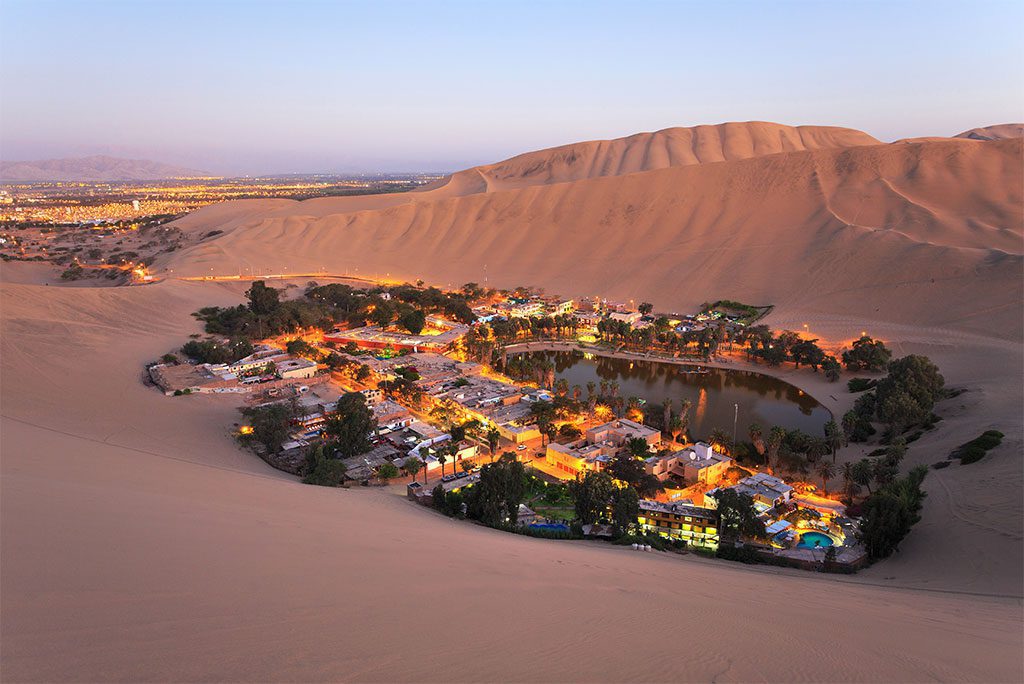
Huacachina, a renowned tourist destination, is located in the southwest of Peru, not far from the city of Ica, and is encircled by sand dunes. The little town appears out of nowhere, like a mirage, crowded around a hidden oasis with swaying palm trees and nothing but desert beyond.
The sand at Huacachina is excellent for sandboarding, quad riding, and dune buggy trips, all of which are popular outdoor sports. Climbing to the peak of the shifting sand dunes is a necessity, since the views from there are breathtaking, especially at sunset.
Oasis lounging and scenic viewing are delightful ways to pass the time, and cooling down in the pool is a wonderful relief from the scorching sun. Huacachina caters to visitors, so it offers several eating establishments, drinking establishments, and lodging options, as well as a few stores and kiosks. In addition to its many exciting activities, Ica is also home to several excellent vineyards and bodegas where you can try the local food.
12. Mancora
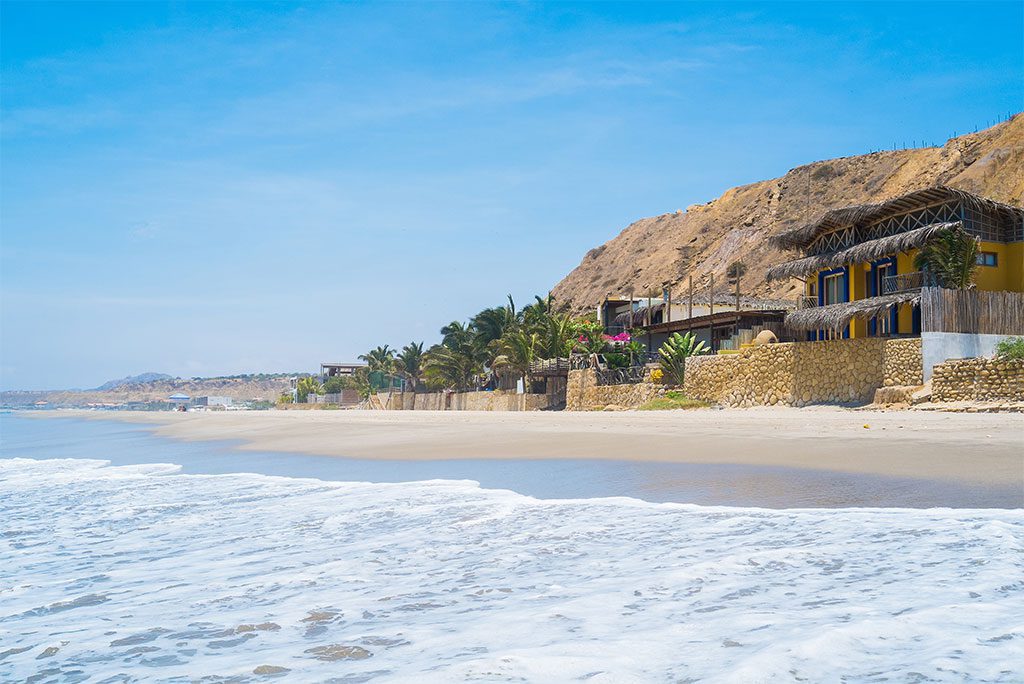
Mancora, located on the Costanera Norte in northern Peru, is one of the most popular summertime beach spots in the region. Long expanses of beautiful sandy beaches in one of Peru’s sunniest regions haven’t gone unnoticed by the country’s booming tourist sector. Here, you’ll find a wide range of beachgoers, from budget travellers to those looking for luxury.
Mancora boasts beautiful beaches, but the town really comes to life at night, when the many beach bars, seafood restaurants, and exciting nightlife venues open up.
However, much of the time spent here consists of doing nothing; rather, leisurely beach days are the norm. Active vacationers may go surfing in the warm waters; walk along the coast from South Beach to Organos; or watch seasonal marine mammals like dolphins and whales play in the surf at the main beach. If you weary of Mancora’s beach activities, you can always go out to El Nuro to swim with turtles or to Poza de Barro to relax in the hot springs.
11. Trujillo
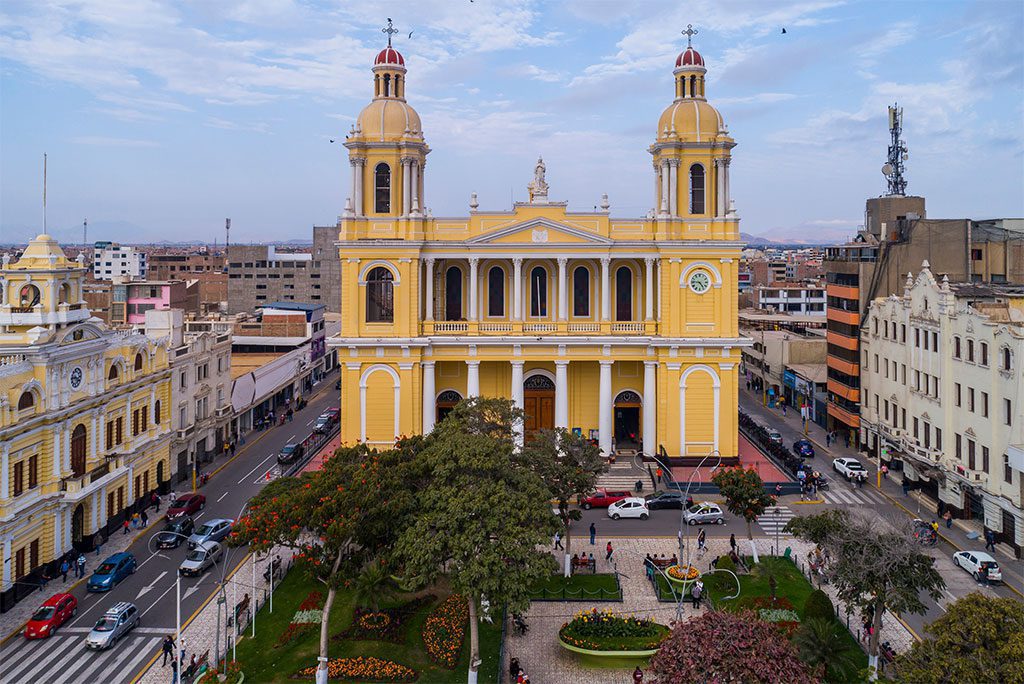
Located eight hours north of Lima in a beautiful valley, Trujillo is known for its picturesque colonial core, which is home to bright Spanish houses, charming churches, and kind residents.
This reasonably significant settlement was established in the 1500s near to the abandoned Chan Chan ruins, the remnants of one of the major pre-Incan civilizations in ancient Peru, located not far from the Pacific Coast. This Chimor mud city is the biggest adobe city in the Americas, and its once-walled remains include a number of important structures, including temples, tombs, and the homes of the royal family.
However, it isn’t the only interesting part of Trujillo’s past. See the amazing paintings of Huaca de la Luna (the Temple of the Moon), which regrettably depict human sacrifice, and the 19th-century National University of Trujillo, one of the biggest of its type in South America. Huanchaco is a great place to unwind after a day of sightseeing, and its beaches are ideal for this purpose; just remember to bring sunscreen!
10. Nazca Desert
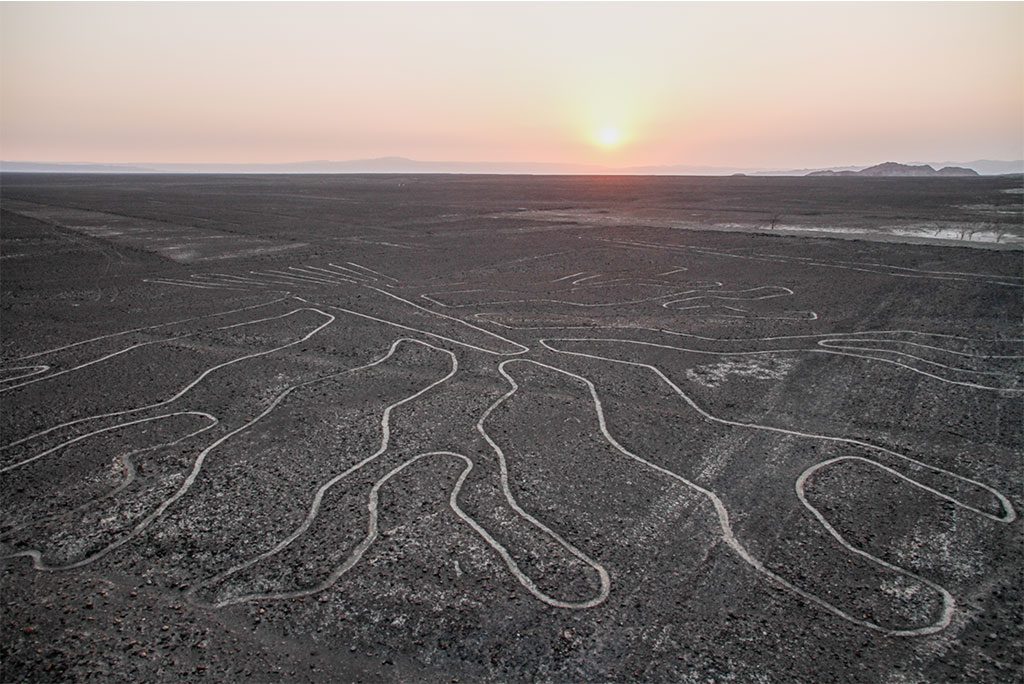
The Palpa and Nazca valleys in Peru’s desert are now on the map because of the mysterious Nazca lines that cut across them. The Nazca people are credited with carving these massive inscriptions of lines, animals, and geometric patterns into the sandy landscape, which some believe to be a sacred route dating back a thousand years. The lines have remained visible to this day, thanks in part to the Nazca Desert’s dry, windless, and steady environment.
A flight above the Nazca lines is the finest way to take in their sheer immensity. There is an observation tower along the Panamerican highway from which you can see three of the major figures if you’d rather not fly (the prices aren’t cheap!)
The Nazca channels, ancient aqueducts carved onto the desert floor, are another fascinating Nazca feature. The desert’s cotton, potato, and fruit fields wouldn’t be able to survive without the network of subterranean canals that provide water to them.
9. Iquitos
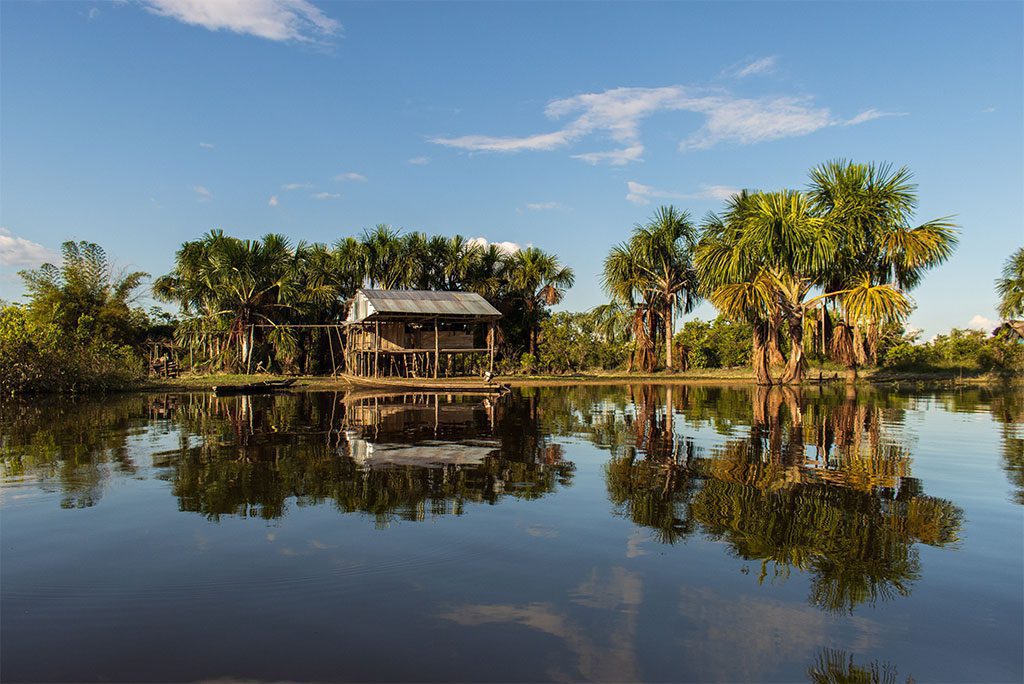
The city of Iquitos serves as the regional seat of Loreto, which includes the majority of the Peruvian Amazon’s northernmost regions. Iquitos, Peru, which is the world’s largest city without a road, was started by a tribe of hunter-gatherers.
You’ll have to take a plane or a boat to get to Iquitos, but the effort will be well rewarded. Despite its isolated setting, the town’s centre square has antique buildings that stand in stark contrast to the more contemporary wooden houses that line the riverbank.
The Belen Floating Market provides a unique and genuine Amazonian experience, with stalls selling everything from bananas to crocodile meat. The San Juan Crafts Market is the best place to get unique items to take home with you.
Iquitos benefits from its relative seclusion since the surrounding forest provides excellent conditions for seeing native fauna. It’s the best place to begin an Amazon River boat excursion in order to see monkeys, alligators, and even the feared anacondas. In the vicinity of Lagunas, the Pacaya Samiria National Reserve is a great area to go in search of rare Amazonian animals.
8. Puno
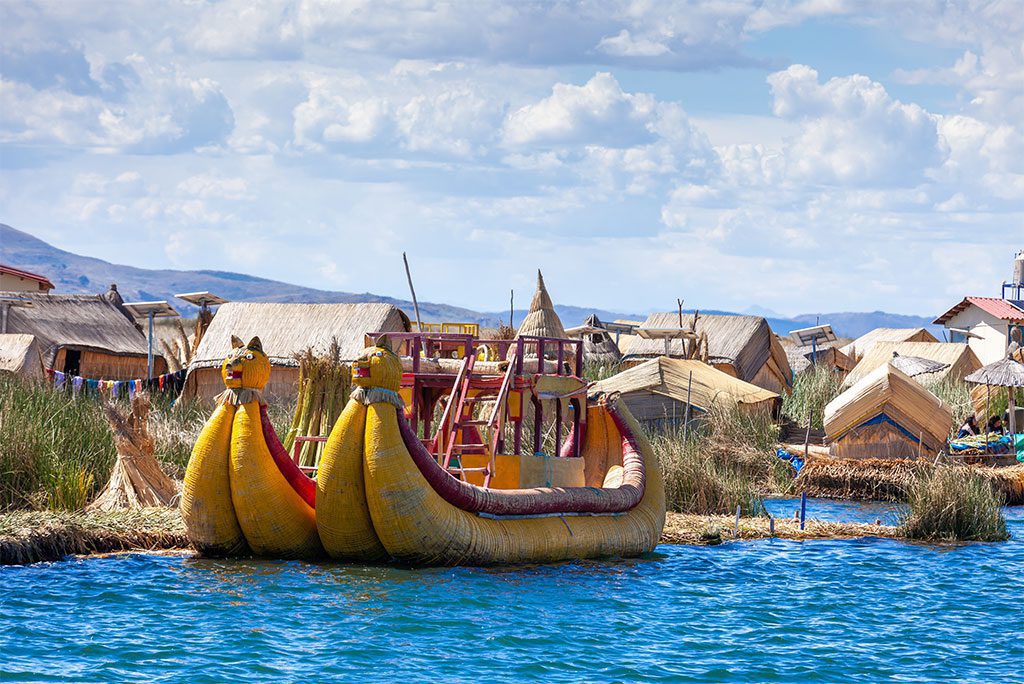
With boats leaving from the pier every 40 minutes, Puno is a charming hillside port city that serves as the natural entryway to Lake Titicaca and the more than 85 floating islands known as the Uros. At an impressive 3,800 metres above sea level, Puno offers a stunning view of the lakes and islands in the area.
Puno is a famous tourist destination due to its proximity to Bolivia and Chile, but it is also a more relaxed option than the posh lake islands that it overlooks. One example is that the lakefront market sells souvenirs at far lower prices than those in Cusco or Lima.
Most visitors come to get a ride to the nearby Uros Floating Islands, which leave from the pier every 40 minutes. As an added bonus, you can learn a lot about the Aymara and Quechua people there as well. Visits to llama farms and homestays with local families are two of the most sought-after activities. Puno’s population is mostly Andean, making for a fascinating blend of contemporary life and ancient customs; you’ll also see many ladies dressed in bright, traditional attire.
7. Lima
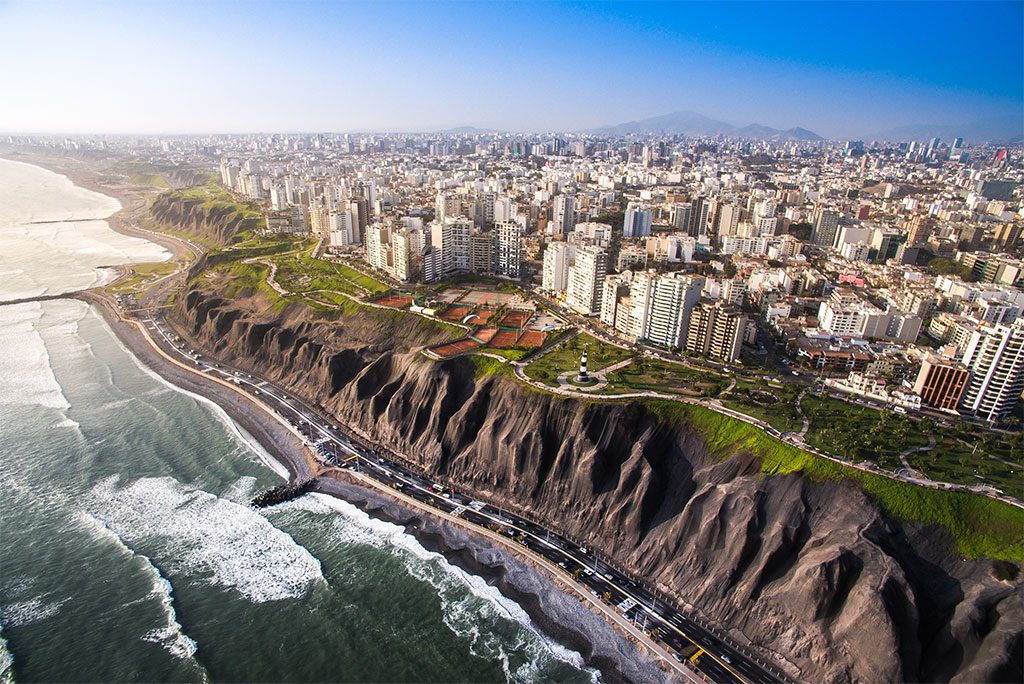
Lima is home to about 9 million people, making it a huge metropolis and the country’s capital and biggest city. Francisco Pizarro, a Spanish explorer, started the city in 1535. It has a lot of historical sites, tasty food, and interesting cultural traditions.
The city is a fascinating mix of old and new, with colonial structures sitting next to ultra-hip nightclubs and slums with strict rules coexisting with chaotic dance clubs and pubs. Since the Spanish ruled Lima for 300 years, many of its churches, cloisters, and monasteries have beautiful Spanish-colonial architecture.
Lima’s proximity to the ocean makes it a fantastic destination for those who like eating seafood. Lima’s traditional Peruvian delicacies, such as the city’s namesake ceviche, are best experienced on a culinary tour that takes you to the city’s best markets and restaurants.
Lima is full of unique experiences, whether you’re walking through the historic centre of Lima Centro and its handmade markets or the more tourist-friendly green neighbourhood of Miraflores, which is packed with antique shops and bars.
6. Colca Canyon
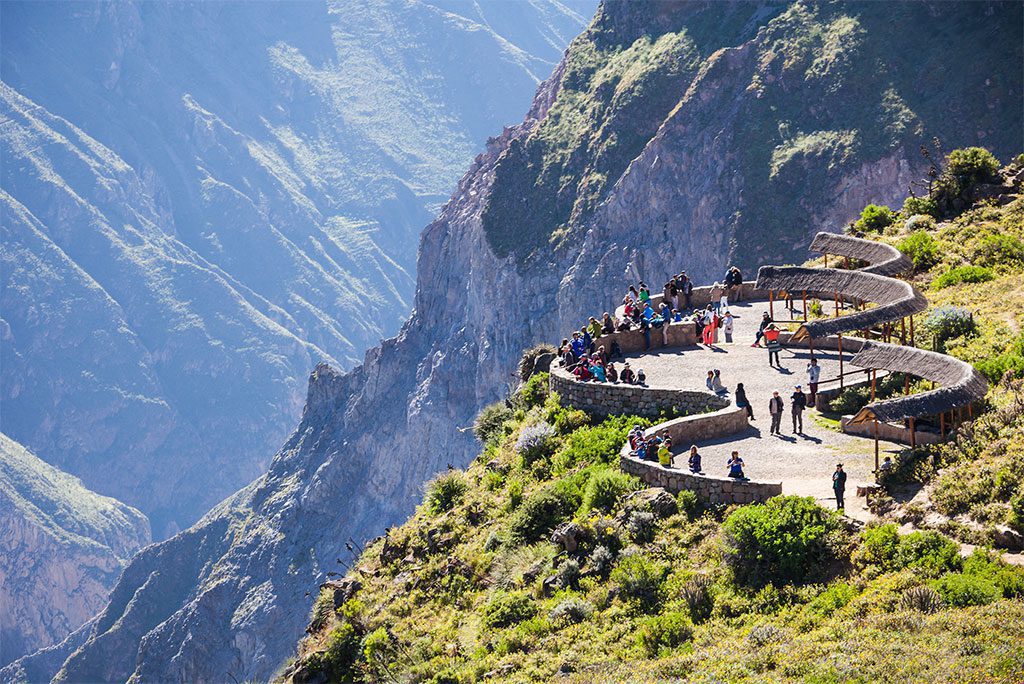
Colca Canyon, located in the Southern Sierra area, is a popular travel destination for visitors visiting Peru. The second-deepest canyon in the world is nearly 70 kilometres long and is home to stunning landscapes and unique Andean culture and ecology.
Colca’s remarkable characteristic is not its size or scale, but rather the variety of its scenery, which ranges from desolate steppe and tiered terraces to steep-sided cliffs and towering mountain summits. Amazing views of Andean condors soaring over the 3,140-meter-deep canyon can be had from just about everywhere.
Ruins and archaeological sites dot the canyon floor, and inhabitants still practise their forebears’ customs in the region’s very tiny communities. Beginning their journey in Chivay, many visitors to Colca Canyon set out to see the canyon’s breathtaking scenery and breathtaking vistas by hiking around the rim.
5. Sacred Valley
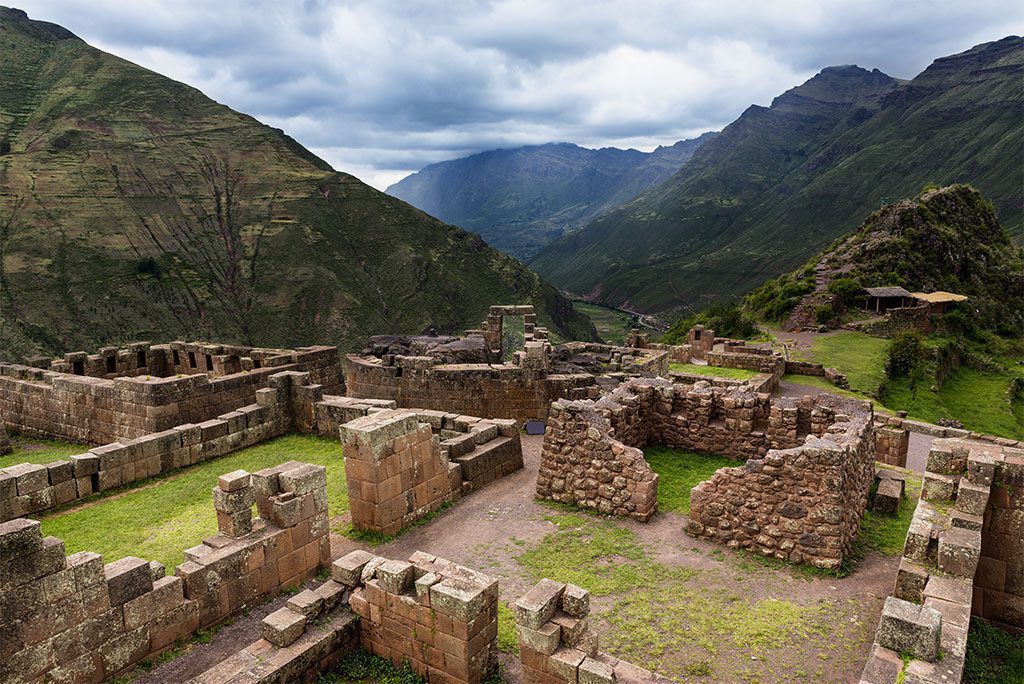 The Sacred Valley of the Incas is a valley in the Andes, not far from Cusco and the Incan citadel of Machu Picchu, that was once the centre of the Inca Empire. The Incas recognised the valley’s value because of its favourable topography and climate.
The Sacred Valley of the Incas is a valley in the Andes, not far from Cusco and the Incan citadel of Machu Picchu, that was once the centre of the Inca Empire. The Incas recognised the valley’s value because of its favourable topography and climate.
Adventure sports, including hiking, rafting, and rock climbing, are very common in this region of Peru. Yucay and Urubamba, on the other hand, have become popular places for people who want to live more slowly and think a lot.
There is a lot to learn along whichever path you choose. Along this enigmatic path, you’ll find beautiful colonial cities, secluded villages, vibrant marketplaces, and amazing Incan monuments like the fortresses of Pisac, Chinchero, and Ollantaytambo.
Visit the famed artisan market in Pisac after a day of hiking the terraced hills above the town. Check out Choquequirao, the less-visited ruins that are said to rival Machu Picchu in beauty.
4. Inca Trail
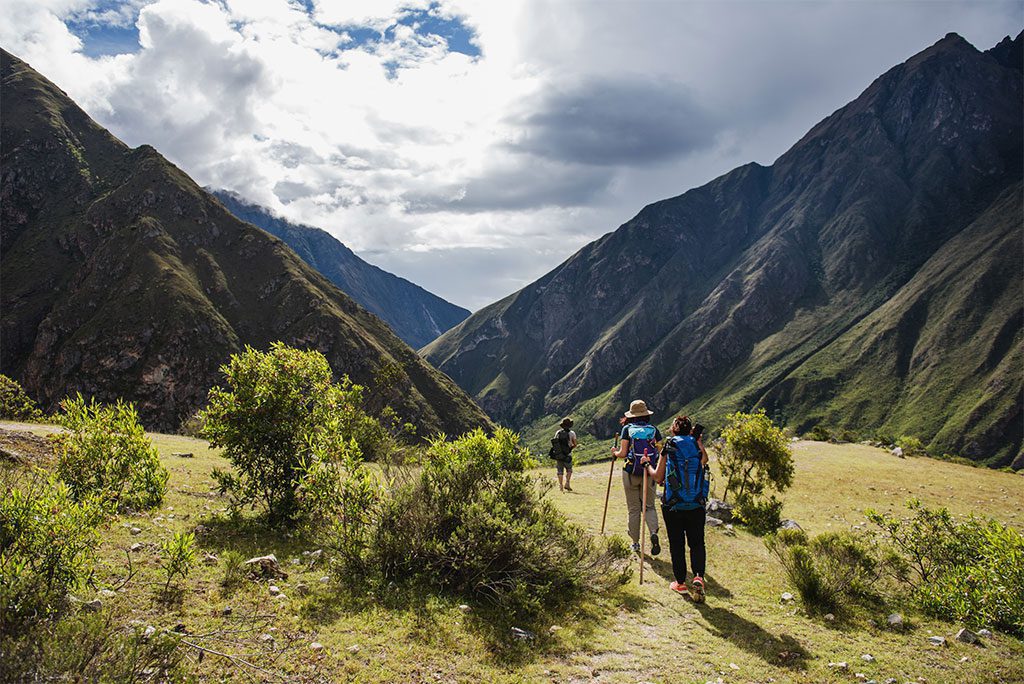
Peru’s Inca Trail is one of the world’s most well-known hikes, and with good reason. The trail winds through the Andes, up and over hills and down into valleys, offering spectacular scenery the whole way. The legendary Machu Picchu, the Incas’ Lost City, is at the conclusion of a four-day trek that begins just outside of Cusco, the old capital of the Inca Empire.
The route winds through a variety of habitats and landscapes, using historic stone routes and trails built by the Incas themselves. Some of it follows terraced terraces, while other sections run near alpine tundra and cloud forest, with steep valleys and imposing mountains in the background. Since the Inca civilization thrived in the mountains, you may also see old ruins along the road.
The popularity of the Inca Trail has necessitated the use of tour operators, who provide a variety of distance and elevation options for hikers. Hiking the Inca Trail to Machu Picchu is a once-in-a-lifetime opportunity that will leave you with incredible memories.
3. Arequipa
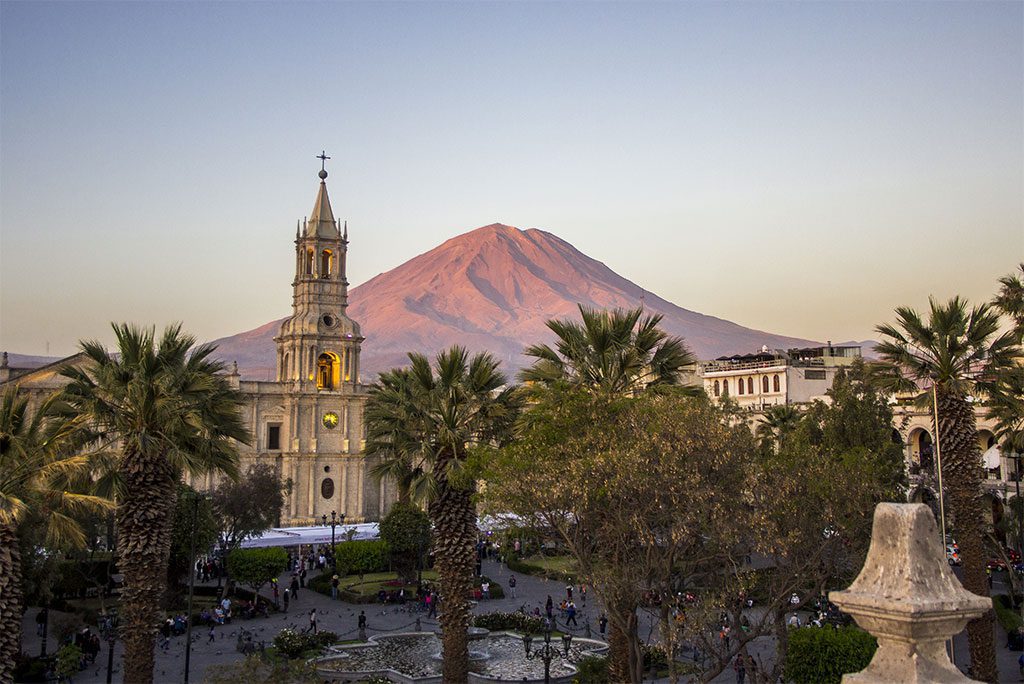
Arequipa, Peru’s second-largest city, is situated 2,380 metres above sea level. Surrounded by mountains and volcanoes, including El Misti itself, this settlement earned the moniker “White City” due to the widespread usage of a white volcanic rock called sillar in its construction.
Arequipa, unlike other Peruvian towns, does not boast any Incan villages that have been discovered. It is best renowned for the Mummy Juanita, or the Lady of Ampato, the remarkably well-preserved frozen corpse of a young Incan girl who was sacrificed to the gods in the 1400s. She is presently housed at the Museum of Andean Sanctuaries at the Catholic University of Santa Mara.
The downtown area is littered with Spanish colonial buildings. The Santa Catalina Convent is one of the most notable, and is sometimes compared to a little city because of its picturesque streets, bright buildings, and beautiful landscaping. The Puente Bolognesi is a stunning example of a bridge that serves as much as a visual treat as it does a historical one. Many visitors to the city begin their explorations at the Plaza de Armas, the heart of the historic district and home to several shops, restaurants, and historic churches.
One of Peru’s most popular tourist destinations is the Colca Canyon, and the best way to get there is via Arequipa. The canyon is 3,270 metres deep, making it one of the deepest in the world.
2. Cusco

Cusco is a vibrant city in the southern Sierras and the former capital of the Incan Empire. Currently, it is considered the most important archaeological site in all of North and South America. For good reason, it’s one of Peru’s most popular tourist spots: from there, you can easily reach the spectacular Machu Picchu and the Sacred Valley of the Incas.
The Plaza de Armas lies in the centre of the city and was constructed by the Spanish on top of the remains of ancient Incan temples and palaces. The vibrant San Pedro Market is close by, where you can buy local goods and colourful Quechua souvenirs like alpaca fabrics, painted pots, ceramics, and Peruvian dolls.
Sacsayhuaman, located on the outskirts of the city, is a massive walled structure made of big limestone stones and a very significant Inca monument. The site is a great example of ancient engineering because it is perfectly aligned with the solstices and can stand up to earthquakes.
The city is rich in history and culture; it serves as the Andean hub for the Quechua people. The surrounding mountains are also great for hiking and have several thermal springs. It seems like time has stood still as you explore the city’s colonial buildings, artisan markets, museums, and galleries.
Make sure you give yourself plenty of time to acclimate to the altitude in Cusco before you visit, since the city is located 3,400 metres above sea level.
1. Machu Picchu
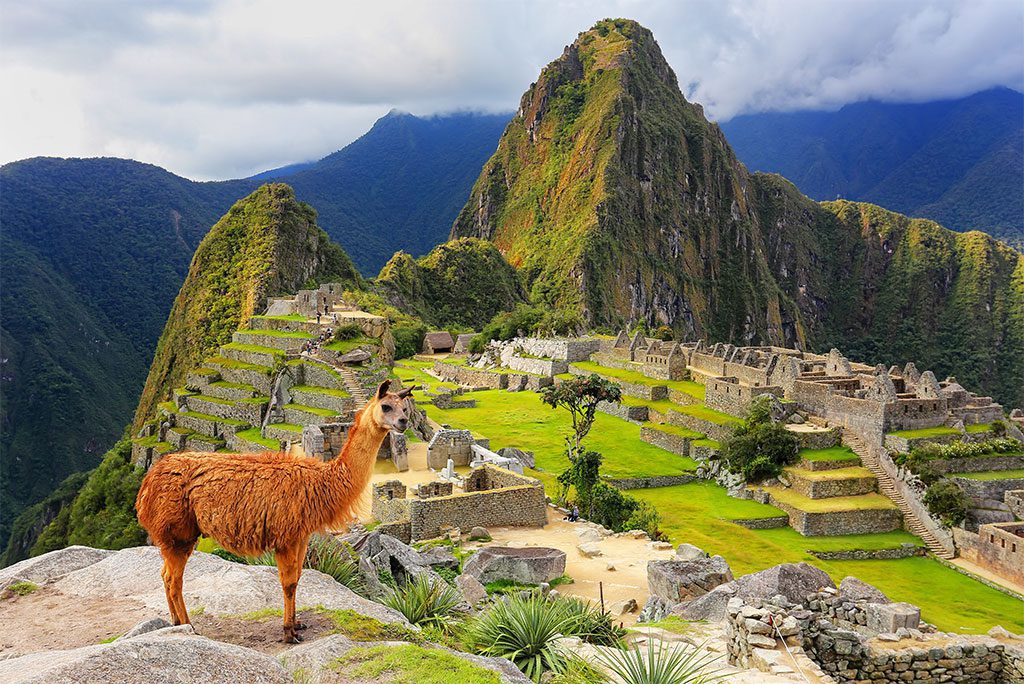
For whatever reason you go to Peru, a visit to Machu Picchu will undoubtedly be the highlight of your trip. Situated at an altitude of 2,430 metres in the Andes, this long-abandoned old Incan city seems to be permanently enveloped in mist. The city is so hard to get to that it wasn’t found for decades, giving it the name “the Lost City of the Incas.”
Eventually, an explorer stumbled onto the spot, although it was just by chance. Since its discovery, it has risen through the ranks of “most wanted” travel destinations. This implies that you should prepare for a high volume of visitors by booking your vacation in advance. Popular routes to these deteriorating Incan remains include the Inca Trail and the Salkantay Trail. Those who would rather not walk up the hill may use the train.
The location is well worth the trip, regardless of how you plan to get there. Discover agricultural terraces and signs of an irrigation system in addition to well-preserved structures such as homes, temples, fountains, and baths. Climb Huayna Picchu or Machu Picchu Mountain for a bird’s-eye perspective over the lovely valleys, or take in the scenery from the Sun Gate, the entrance to Machu Picchu along the famed Inca Trail.


